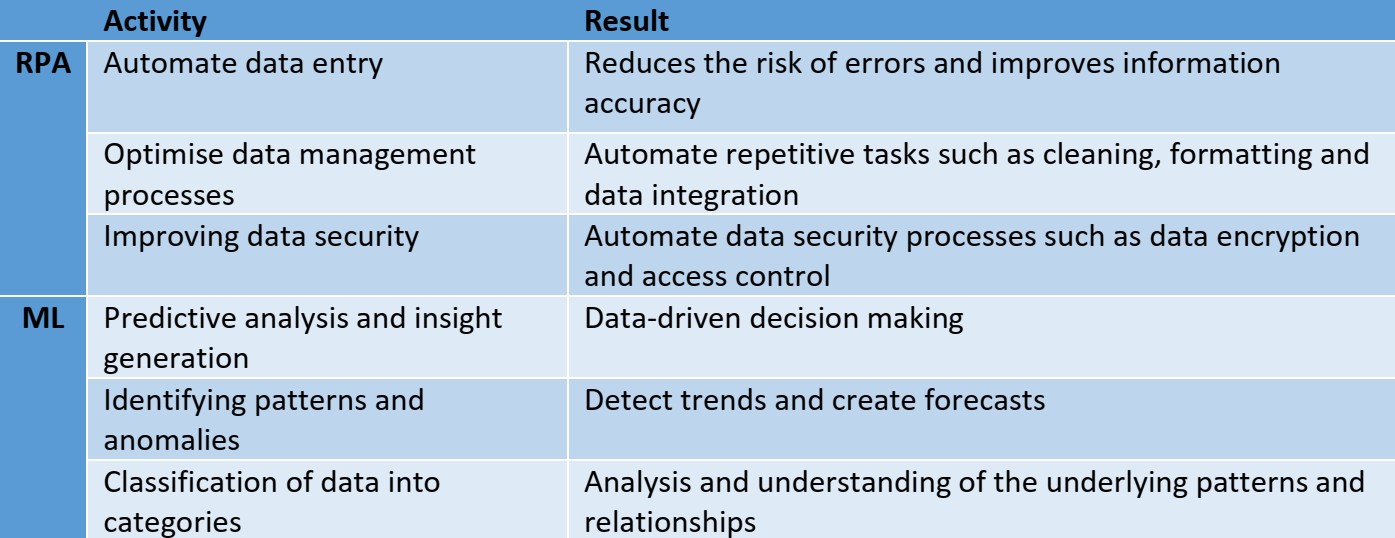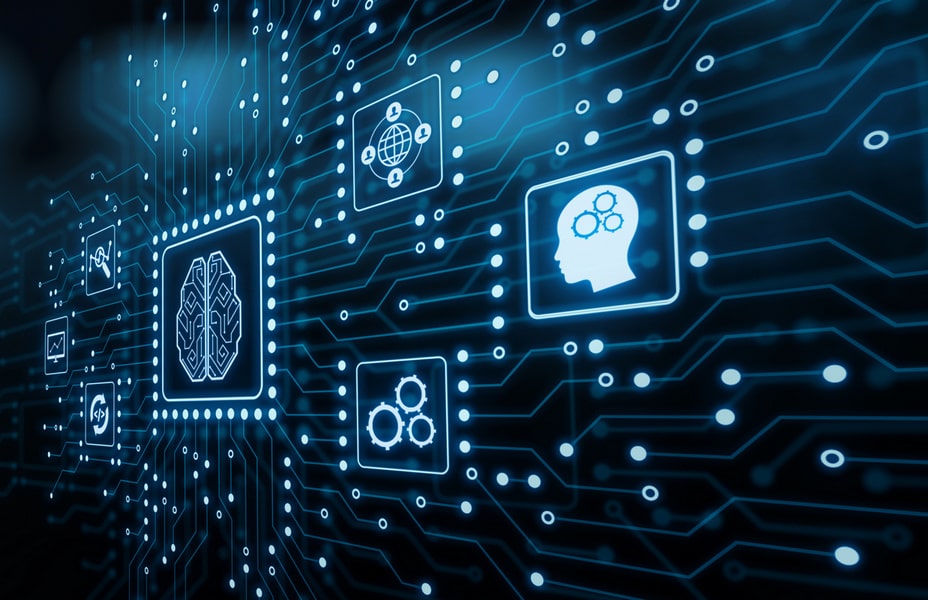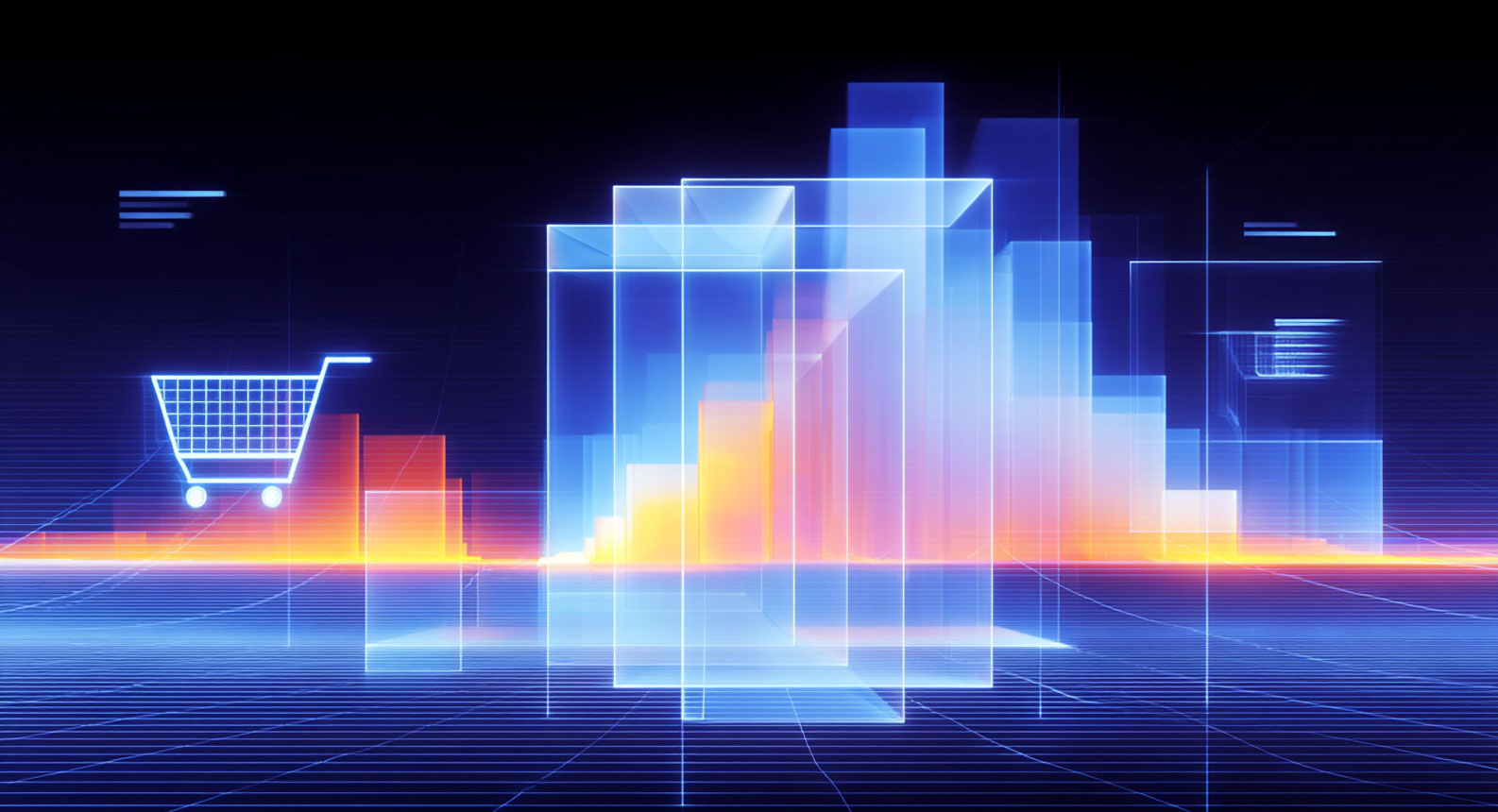Do we know how to get the most out of both technologies?
Robotic Process Automation (RPA) and Machine Learning (ML) are two innovative technologies that revolutionise how organisations work. The possibilities of RPA and ML are endless, and the potential for innovation and transformation is enormous. Industries like finance, healthcare, and retail are the best suited to implement them. However, many others can also benefit enormously from the utilization of these advanced technologies. For that reason, the critical question is how to combine them for maximum results.
How to choose the right technology?
Technologies can be used collaboratively, but each organisation must carefully define which solution best fits its specific activities. Let’s look at what the key differences are:
RPA is rule-based software that mimics human actions, automates routine tasks, and optimises workflows. It works through structured data and follows a predefined set of instructions to perform a task. It’s suited for data entry, invoice processing, and report generation.
In comparison, Machine Learning is a subcategory of artificial intelligence that uses algorithms to identify patterns in data and make predictions. ML learns based on experience and improves over time without being explicitly programmed. Therefore, machine learning is often used to solve complex problems that involve large amounts of data and require predictive analysis. Examples include fraud detection, sentiment analysis, and predicting customer behaviour.
The technologies behind RPA and ML
RPA uses a graphical user interface (GUI) to interact with applications and websites, while ML relies on algorithms and statistical models to analyse data. RPA can be easily integrated with legacy systems, and the implementation process is relatively straightforward. ML requires significant data preparation and model training before implementing a specific solution.
There are also significant differences between the two technologies regarding scalability and adaptability. RPA is highly scalable and can quickly scale up or down depending on the organisation’s needs. It can also be adapted to the core system and process changes without significant additional customisation. Unlike automated process robotics, ML models are challenging to scale as they require a large amount of computing power and specialised hardware. Furthermore, ML models are sensitive to changes in the underlying data, and any modifications may require re-training them starting from scratch.
Need for human intervention
Another significant difference between RPA and ML is the level of human intervention required in both technologies. The former is designed to automate routine tasks and works autonomously without human intervention. However, it requires a certain level of supervision to ensure the accuracy and quality of results. The latter (ML) requires human intervention in data preparation, model selection, and tuning.
RPA and ML applications
Despite their differences in technology, scalability and the need for human intervention, both innovations can be used for the same purposes, namely to automate different processes, improve operational efficiency and increase the quality of data-driven decision-making.
What are the specific applications of automated process robotics and machine learning?

Combined applications of RPA and ML
RPA and ML can work together to help organisations improve operational efficiency and increase the quality of data-driven decision-making. Some examples include: Automate data entry and management: RPA is used to automate the data entry and management processes, while ML is used to analyse the data and subsequently identify patterns and trends.
Streamline financial processes: RPA automates financial processes such as invoice processing and accounts payable, and ML can be applied to detect fraud and identify cost-saving opportunities.
Improve customer service: RPA is applied in automating customer service processes such as chatbots and email responses while using ML can analyse customer data and provide personalised recommendations.
In this regard, the combined capabilities of RPA and ML can genuinely transform a wide range of industries, enabling organisations to achieve their goals with greater speed, accuracy and efficiency. An excellent example of early adopter sectors where the two technologies are expected to lead to significant optimisations is finance, where RPA and ML can streamline financial processes, detect fraud and improve customer service. The next one is healthcare. There, administrative tasks can be automated to help improve patient outcomes and increase the quality of healthcare services. Last but not least is retail. In this sector, RPA and ML can be applied to automate inventory management, personalise customer experiences and improve supply chain efficiency.


